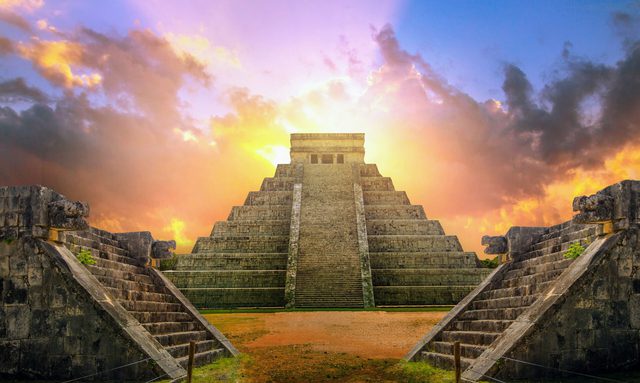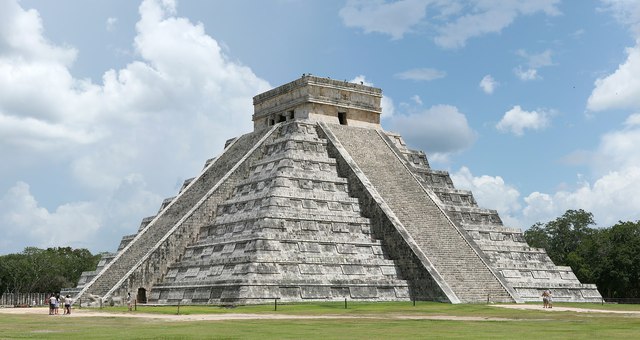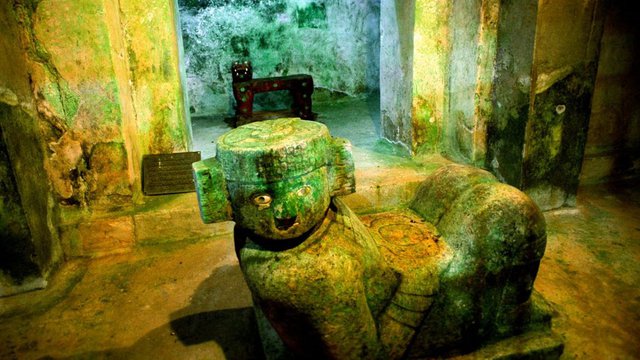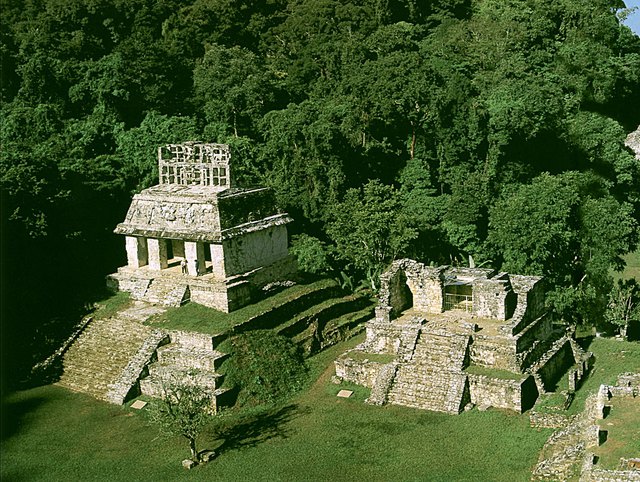What's inside the ancient Mayan pyramid?
The ancient Maya built hundreds of pyramids across Mesoamerica between 1,000 BC and 1,500 AD, and they placed many objects accordingly. artifacts within them
But what exactly did they put inside them? Palenque is an archaeological site located on the western edge of Chiapas, Mexico. This place has a number of ancient Mayan sculptures and architectural works. Most of Palanque's monuments date back to the years 600 - 800. There are pyramid temples with inscriptions and unique architectural features that attract a large number of tourists to visit and learn. The carvings and stucco art in Palenque always bring visitors excitement.
Palenque is an archaeological site located on the western edge of Chiapas, Mexico. This place has a number of ancient Mayan sculptures and architectural works. Most of Palanque's monuments date back to the years 600 - 800. There are pyramid temples with inscriptions and unique architectural features that attract a large number of tourists to visit and learn. The carvings and stucco art in Palenque always bring visitors excitement.
It turns out that, like the pyramids of ancient Egypt, the pyramids built by the Mayans also contained many treasures and burial items. But what makes them more special than the Egyptian pyramids is that inside these pyramids there are other smaller pyramids inside.
For example, the pyramid "El Castillo", at the site of Chichén Itzá in the Yucatán Peninsula, is a giant pyramid with a very special structure, it has many pyramids inside with a different arrangement. arranged like a Matryoska doll (Russian doll)
This pyramid is 24m high, built around the 9th century, and is considered evidence of the very high level of astronomical knowledge of the Mayans. On the days of the Spring and Autumn equinoxes, the sun's shadow on the pyramid will create the shape of a winding snake slithering down the main walkway of the tower. In addition, along with the top, the pyramid has a total of 365 steps, symbolizing the length of a year in the Mayan calendar. Andrés Tejero-Andrade, a professor at the National Autonomous University of Mexico (UNAM), who researched and wrote: "The ancient inhabitants of the Yucatán peninsula, when they came to a living site and happened to This spot had been abandoned before, they did not destroy the old structures. Instead, they built a new structure covering the existing structures."
And this type of construction is not unique to El Castillo; Denisse Lorenia Argote Espino, a researcher at Mexico's National Institute of Anthropology and History (INAH), said building one pyramid on top of another "was a common practice in prehistoric times." Spain -before the arrival of the Spaniards" and that "major structures in older settlements often have several similar tectonic phases". Jaguar Throne inside the "Templo de Kukulkán" pyramid - a Mesoamerican step pyramid located at the center of the Chichén Itzá archaeological site. Built by the pre-Hispanic Mayan civilization between the 9th and 12th centuries AD. This pyramid was built as a temple to worship the god Kukulkan, a feathered snake god closely related to the Aztec god Quetzalcoatl. However, such pyramid piles are not the most common thing archaeologists find in Maya pyramids. Because the Mayan pyramids were used as temples, ceremonial venues, or as tombs for rulers or other elite individuals
Jaguar Throne inside the "Templo de Kukulkán" pyramid - a Mesoamerican step pyramid located at the center of the Chichén Itzá archaeological site. Built by the pre-Hispanic Mayan civilization between the 9th and 12th centuries AD. This pyramid was built as a temple to worship the god Kukulkan, a feathered snake god closely related to the Aztec god Quetzalcoatl. However, such pyramid piles are not the most common thing archaeologists find in Maya pyramids. Because the Mayan pyramids were used as temples, ceremonial venues, or as tombs for rulers or other elite individuals
Burial items were often artifacts such as jade masks (for the deceased), jade beads, obsidian blades, and stingray spines.
Calakmul is a ruins hidden inside the tropical forest of Campache, Mexico. Calakmul is 55m high, the widest pyramid compared to other ancient monuments. Coming to Calakmul, visitors will really enjoy learning more about the heroic history and unique culture of the ancient Maya empire.
Karl Taube, a professor of anthropology at the University of California, Riverside, wrote in a 2005 article published in the journal Ancient Mesoamerica: "The Classic Maya valued jade not only for its preciousness and beauty. jade is also seen as a symbol of nobility. For example, the Mayans associated jade with maize, rulership, and wind. Jade was an important ingredient in burial ceremonies and rituals tribute to the gods and ancestors". The Maya pyramids contain many other notable artifacts. For example, a pyramid at the site of San Bartolo, in northern Guatemala, contains a fragment of the earliest Mayan calendar ever found, dating back more than 2,200 years. A pyramid at Copan, Honduras, has a large inscription containing more than 2,000 Maya inscriptions carved into its staircase. The inscription tells the history of the rulers of Copan, according to a 2006 Getty Conservation Institute report. The Maya used a writing system sometimes called "Mayan hieroglyphics." This writing system had characters representing sounds that made up words that scholars could read and translate




































